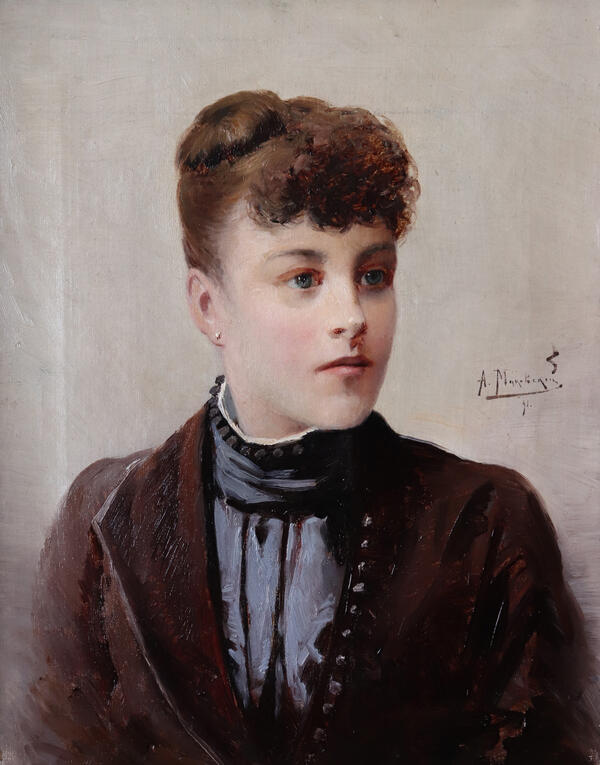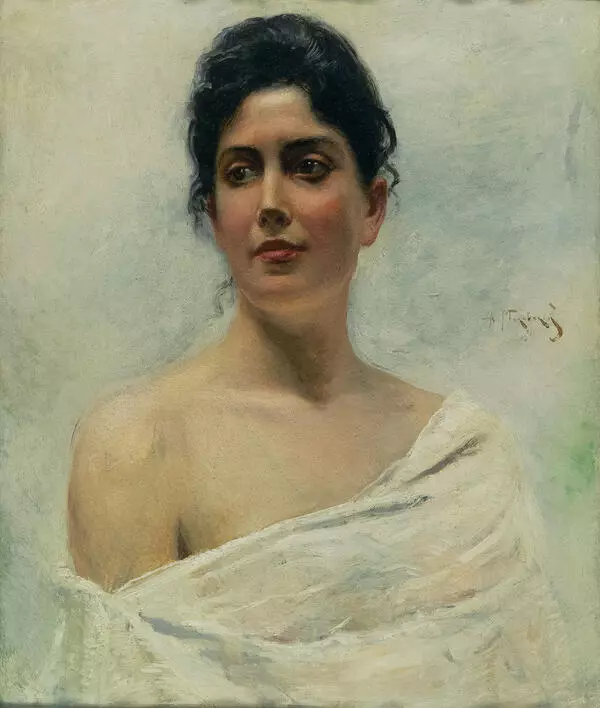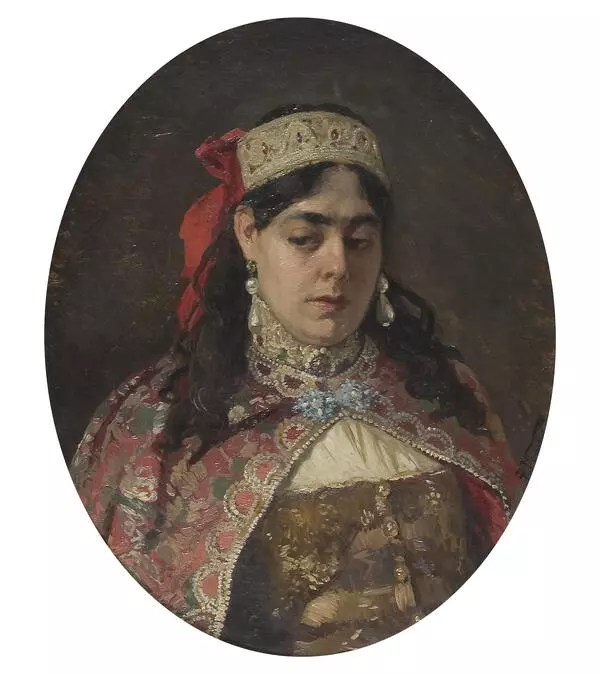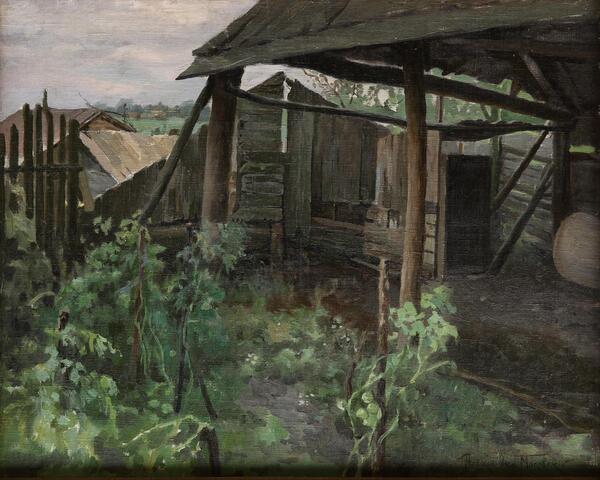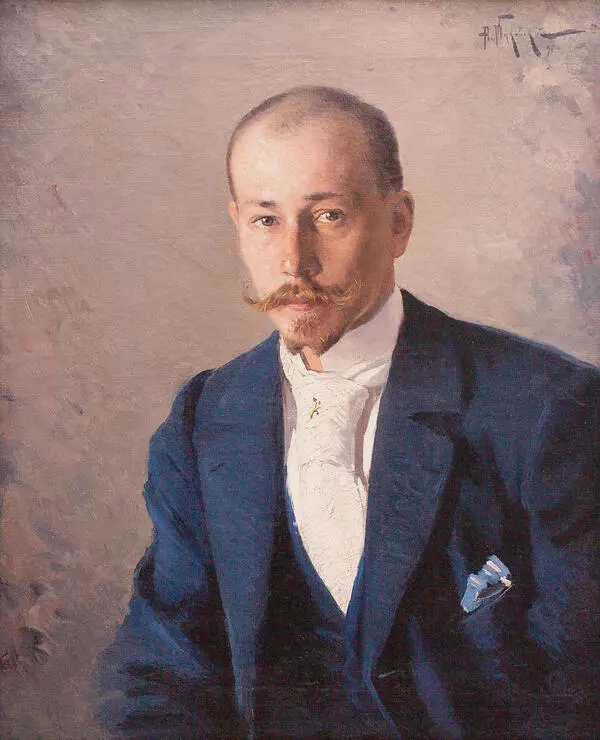Alexander Vladimirovich Makovsky was the heir to a well-known art dynasty. The grandson of a great art lover, one of the founders of the Moscow School of Painting, Sculpture and Architecture Yegor Ivanovich Makovsky, the son of the outstanding master of genre painting Vladimir Yegorovich Makovsky, the nephew of artists Konstantin, Nikolay and Alexandra Makovsky, he was engaged in painting from a young age.
At first, the artist studied at an institution founded by his grandfather, then at the St. Petersburg Academy of Arts, in the workshop of Ilya Efimovich Repin. Since 1902, Alexander Makovsky was a member of the Wanderers. He strove to display everyday life in all its manifestations.
The work “Portrait of a Woman” refers to the early period of the artist’s work — he painted it at the age of 22. The portrait depicts a girl with a delicate oval face and lively blue eyes. Her slightly snub nose and tightly pressed lips reveal a strong-willed, decisive and independent character.
Her clothes are strict and elegant. Such girls were engaged in charity, reached out to the people, and taught peasant children. By the end of the 19th century, the Art Nouveau style came into Russian fashion with its attempt to bring everyday life to the level of aesthetic perfection. Art Nouveau simplified the women’s suit, made it lighter and more comfortable.
The color scheme of the costume is restrained; soft colors were popular at that time. Small round earrings were used as details that complemented the image. At that time, decorations began to be divided into ceremonial and everyday ones. This corresponded to the character and purpose of the costume.
Everyday jewelry was used in restricted numbers to emphasize the severity and graceful simplicity of the dress. During the day, it was customary to wear earrings that were made from a single pearl. In the 1890s, discreet dresses and hair that was gathered at the crown or back of the head came into fashion. The hair was no longer worn high. Compact hairdresses had curly bangs.
The portrait entered the funds of the Lipetsk Regional Museum of Local Lore in the first years of Soviet power from requisitioned property. Already in 1919, among a number of other works, it was exhibited in the art department of the museum.
At first, the artist studied at an institution founded by his grandfather, then at the St. Petersburg Academy of Arts, in the workshop of Ilya Efimovich Repin. Since 1902, Alexander Makovsky was a member of the Wanderers. He strove to display everyday life in all its manifestations.
The work “Portrait of a Woman” refers to the early period of the artist’s work — he painted it at the age of 22. The portrait depicts a girl with a delicate oval face and lively blue eyes. Her slightly snub nose and tightly pressed lips reveal a strong-willed, decisive and independent character.
Her clothes are strict and elegant. Such girls were engaged in charity, reached out to the people, and taught peasant children. By the end of the 19th century, the Art Nouveau style came into Russian fashion with its attempt to bring everyday life to the level of aesthetic perfection. Art Nouveau simplified the women’s suit, made it lighter and more comfortable.
The color scheme of the costume is restrained; soft colors were popular at that time. Small round earrings were used as details that complemented the image. At that time, decorations began to be divided into ceremonial and everyday ones. This corresponded to the character and purpose of the costume.
Everyday jewelry was used in restricted numbers to emphasize the severity and graceful simplicity of the dress. During the day, it was customary to wear earrings that were made from a single pearl. In the 1890s, discreet dresses and hair that was gathered at the crown or back of the head came into fashion. The hair was no longer worn high. Compact hairdresses had curly bangs.
The portrait entered the funds of the Lipetsk Regional Museum of Local Lore in the first years of Soviet power from requisitioned property. Already in 1919, among a number of other works, it was exhibited in the art department of the museum.

